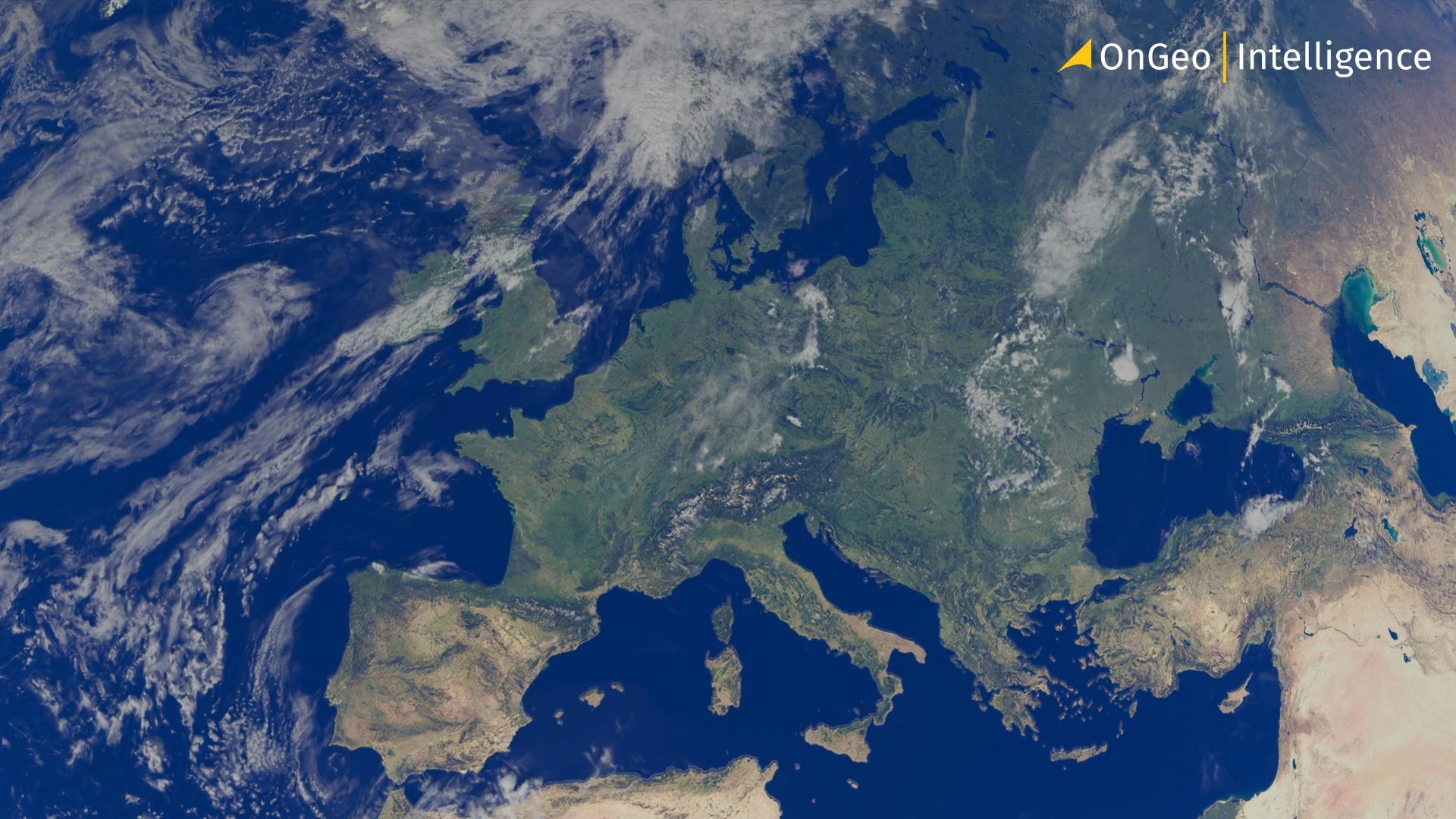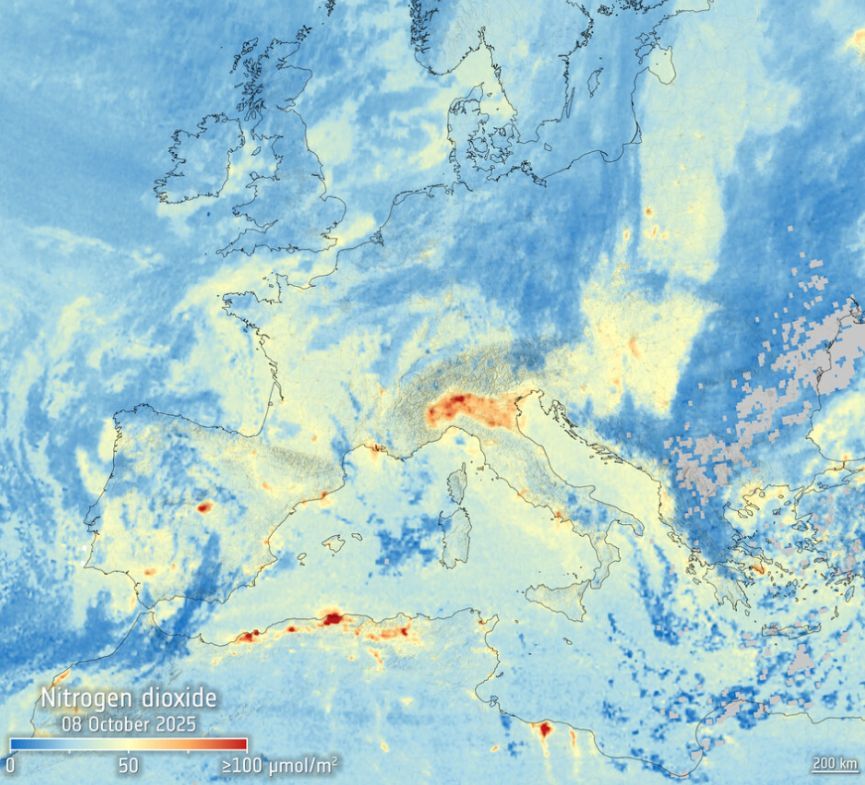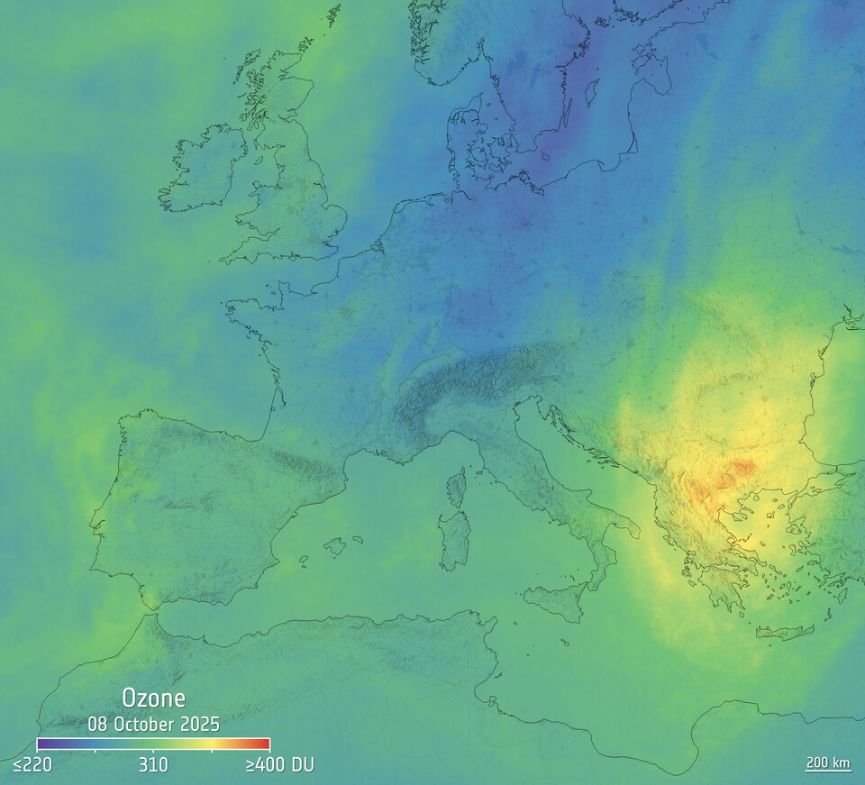
Monitoring air quality from space: Sentinel-4 Satellite Delivers First Data on NO2, SO2, and Ozone Levels in Europe
The European Space Agency (ESA) has just unveiled the first-ever data from the Copernicus Sentinel-4 satellite - and it’s already making waves. The satellite has captured detailed concentrations of major air pollutants such as nitrogen dioxide (NO2), sulfur dioxide (SO2), and ozone. These early readings will help scientists track air quality across Europe and North Africa almost in real-time - a major step forward for environmental monitoring.
Launched in July 2025 as part of the European Union’s Copernicus program, Sentinel-4 was built to deliver crucial insights into the composition of our atmosphere. Working in tandem with the Meteosat Third Generation Sounder satellite, it can observe both weather patterns and air quality from the same geostationary orbit - a powerful combination that boosts both accuracy and efficiency.
Unlike polar-orbiting satellites that sweep around the planet at lower altitudes, Sentinel-4 stays fixed in one spot, watching Europe and North Africa from about 36,000 kilometers above the Earth. This unique vantage point allows it to deliver hourly updates, showing how pollution levels rise and fall throughout the day.
The data will be a valuable resource for researchers across the continent, including experts from Institute of Environmental Protection - who play an active role in the Copernicus Atmosphere Monitoring Service (CAMS).
Stunning First Images from Sentinel-4
The first images released by ESA are nothing short of impressive. They reveal vivid maps of NO2, SO2, and ozone - gases that have a huge impact on both human health and the climate. Nitrogen dioxide and sulfur dioxide, which mostly come from vehicles, factories, and fuel burning, are known to worsen respiratory problems, drive smog formation, and contribute to global warming. Ozone, meanwhile, plays a double role: it protects us from UV radiation high up in the atmosphere, but near the ground it becomes a harmful pollutant.
One of the first visuals shows clear "hot spots" of air pollution over northern Italy and along the Mediterranean coast - regions packed with traffic and industry. Another captures a sulfur dioxide plume rising from Mount Etna, while a third depicts ozone concentrations that match well with data from other satellites.
These early results confirm that Sentinel-4’s instruments are performing flawlessly. “We’re extremely pleased to see these first preliminary results - a big thank you to everyone involved in the mission,” said Didier Martin, ESA’s Sentinel-4 project manager.


How It Works: A Cosmic Sentinel for Cleaner Air
Sentinel-4 monitors the chemical makeup of the atmosphere by analyzing the radiation emitted and reflected by air particles. The satellite detects gases based on their unique spectral signatures, which allows us to identify exactly where pollutants like NO2, SO2, or ozone are located.
By capturing hourly snapshots of changes in the troposphere, Sentinel-4 acts as a true "cosmic air quality guardian" - tracking pollution dynamics with remarkable precision.
Why It Matters: Protecting Health and the Planet
Thanks to Sentinel-4’s data, scientists and environmental agencies will be able to monitor shifts in air quality more accurately, predict smog events earlier, and respond to potential hazards faster than ever before. It’s a big leap for Europe’s environmental monitoring efforts - proof that science, technology, and policy can work hand in hand to protect public health and the planet.
Full operational rollout of Sentinel-4 is expected in the coming months. Its data will soon be available through the Copernicus Atmosphere Monitoring Service, giving researchers, meteorologists, and policymakers across Europe a powerful new tool in the fight for cleaner air.
Related articles
- Why Metadata Is Essential in Satellite Earth Observation
- From Maxar to Vantor: A New Era in Satellite Earth Observation and Geospatial Intelligence
- ICEYE Gen4: Satellites That See the World in 16 cm Detail
- A List of Earth Observation Satellites & Optical Parameters
- What Is Satellite Imagery? A Complete Beginner’s Guide